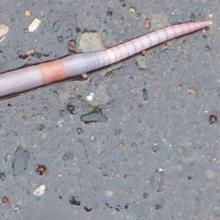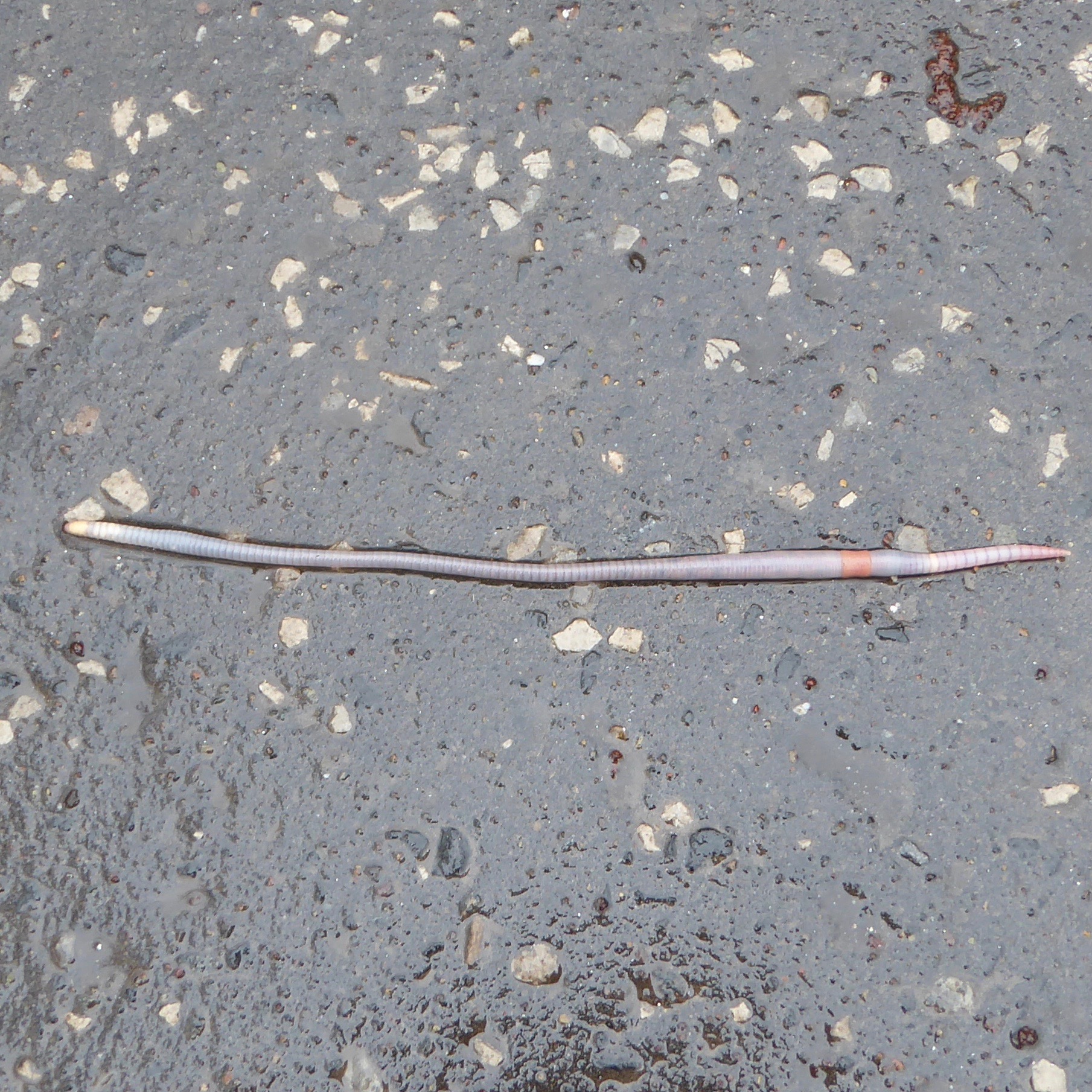
There are many obvious pleasures to be had from heavy, cold and sustained rainfall over several days, such as noticing multiple flaws in the roof and getting to spend hours indoors with small children.
But let us not forget the less obvious pleasures – such as encounters with marvellously strange creatures driven to the surface from the sodden bowels of the Earth.
Caroline Roussot encountered this worm yesterday on the footpath/cycleway between the Rodney Street Tunnel and King George V Park.
Ms Roussot has seen worms before, but none quite like this. ‘ It’s the biggest worm I have ever seen in my life,’ she told the Spurtle, ‘longer than the span of my hand, which is about 20cm.
‘And I've never seen one white with an orange band either.
‘Do you think any local arthropophiles could tell us what it is?’

Getting to grips with worms
Spurtle is unaware of any local arthropophiles in our list of useful contacts, but after several happy hours spent rummaging through the website topsoils of the Earthworm Society of Great Britain and Imperial College London’s Key to Common British Earthworms, we think we have an answer.
The strange beastie encountered by Ms Roussot was a large or elongated and rather wan example of the blue-grey worm Octolasion cyaneum. The yellow tail sealed it.
The Taranaki Educational Resource: Research, Analysis and Information Network, based in New Zealand, where the introduced blue-grey worm is now widespread, helpfully points out that:
Its diet is soil. Its typical size of adult is 10cm. The body from the first segment to the saddle is partly or entirely pale in colour. Can vary from faint blue-grey to a pale rosy pink colour. It has a distinct yellow tail (last four or five segments). It may have a lilac blue line on the upper surface.
Earthworms are hermaphrodites: They typically have two pairs of testes, surrounded by 2 pairs of testes sacs. There are 2 or 4 pairs of seminal vesicles which produce, store and release the sperm via the male pores, and ovaries and ovipores in segment 13 that release eggs via female pores on segment 14. However, most also have one or more pairs of spermathecae (depending on the species) that are internal sacs which receive and store sperm from the other worm in copulation. Mature earthworms display a glandular ring or saddle - clitellum - on the front portion of the body. Clitellum has a function in reproduction, and its size, shape and position vary between species.
How long is long?
The website All About Worms notes that earthworms can routinely grow to around 20cm, with the Lumbricus terristris sometimes achieving 25cm. The Brazilian Glossoscolex giganteus grows to roughly 1 metre, while the Megascolides australis has been known to reach three times that length and tamper with cricket balls.
Spurtle would welcome further natural observations from our readers. Please send us details and a photo of any other interesting oddities you find lying about in the neighbourhood.